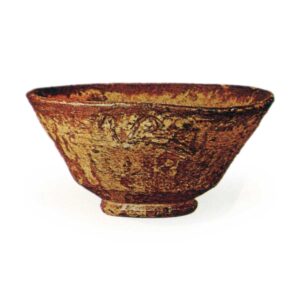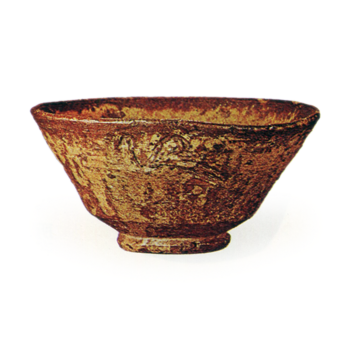
Irarabo is a type of Koryo tea bowls, and it is said that some of them are made in China and some of them are made in the southern part of Korea. The glaze is rough due to the rekkazes of pebbles in the clay, and the texture is irritating.
According to Mashimizu Zoroku’s theory, Irabo was produced in South Gyeongsang Province. This theory is almost entirely credible, as similar pieces are often found in ceramics excavated in the region in recent years. There are many types of iraho, and ancient tea masters have used terms such as “senjikata,” “katamegae,” “kugibori,” and “yellow or black iraho” to refer to them. Later imitations of this style by the Kamayama and Tsushima kilns were also included in this category, so there are both old and new types, and the production areas are also scattered in various directions. The most popular type of pottery among tea ceremony masters was the “Kusatsu” ware, which had a refined elegance in its coarse clay. It is said that the name “Irabo” may have come from the fact that it was so roughly made that it had an irritating or warty feeling to the touch. The reason why the presence or absence of the IRABOHO is not related to the price is because the quality of this tea bowl is so crude, and therefore, the preservation of this bowl is more important than other tea bowls. This may be due to the fact that the quality of these bowls is crude, and therefore they must be preserved to the utmost perfection. (Manpo-zensho, Ureshu-shoran, Touki Kou, Touyosei, Taisho Meikikan, Koryo Chawan to Seto no Chairi, etc.)



